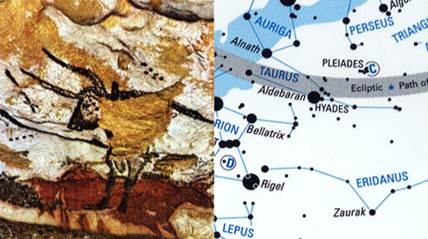A Brief History of AstronomyOur earliest records of man's interest in the stars can be found in the cave art in Europe.
It is often claimed that the Greeks named the stars, but we now, on the net, have access to far more ancient references and we can examine Sumerian and Akkadian dictionaries to decipher the most ancient meanings of the names, which means they knew the star names. The Bible says that although man named the animals, God Himself named the stars. This is examined in our article here. One of the joys of the internet is that you can find material of real quality which explains something better than you can. There is good timeline of the history of modern astronomy here. A much more detailed one is here. In the last hundred years, so much new information has been discovered and explored by astronomers and astrophysicists that it is impossible for textbooks to keep up with it. Of necessity, texts used in schools are five to ten years behind, and often more. During the last century, it was discovered that the Milky Way was not the entire universe; quasars were discovered, along with their galaxies; the discovery of the cosmic microwave background radiation invalidated some of Einstein's theories; the red shift of light from distant galaxies gave us startling information; and recently plasma physics has taken off, and is challenging the gravitational model of the history and formation of the universe. George Dodwell discovered evidence for a change in the axis tilt of the Earth occurring in approximately 2345 BC, which explained a lot of archaeological mysteries. We will do our best to keep up with new information as it comes in at the bottom of the relevant pages.
|
